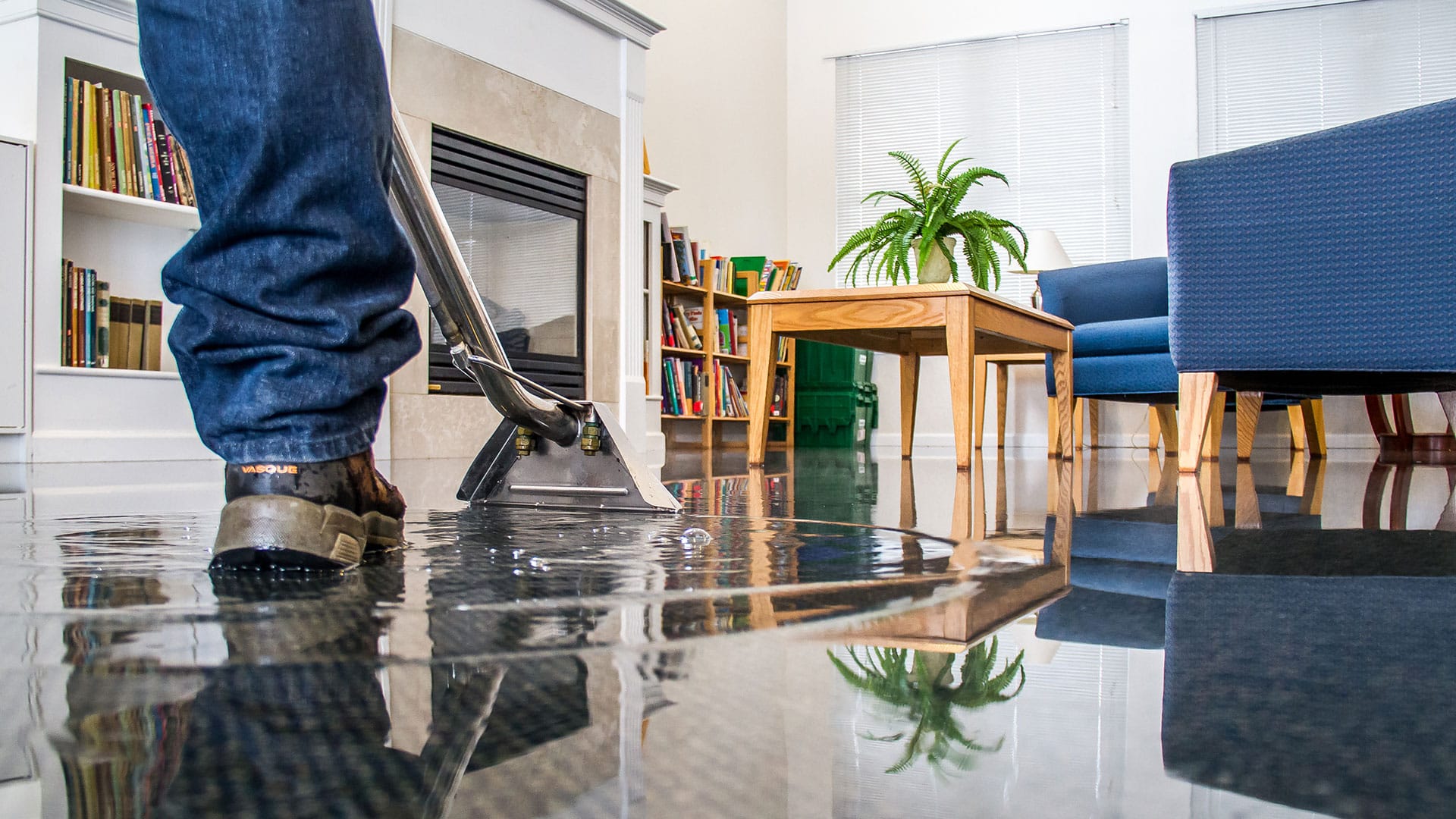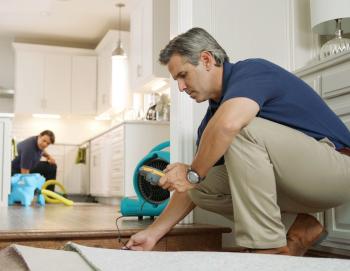Water Damage Restoration 101: Recognizing the Process and Cost
Water damage can strike suddenly, leaving house owners in a state of complication. Recognizing the reconstruction procedure is crucial for effective recovery. From examining the damage to picking the best company, each action impacts the general end result and price. Aspects such as the kind of water damage and seriousness also play a substantial duty. What are the particular methods used in repair, and just how can one get ready for prospective expenditures?
Sorts Of Water Damage

Initial Analysis and Inspection

Water Removal Methods
Adhering to the initial assessment, efficient water extraction techniques are employed to minimize damage and avoid further issues. These techniques involve using customized devices such as submersible pumps and industrial-grade vacuums - Mold Remediation After Water Damage. The option of approach depends upon the volume of water present and the type of materials influenced. For standing water, submersible pumps are usually made use of for rapid elimination, while vacuums are optimal for removing water from rugs and upholstery. In addition, advanced methods like water extraction mats might be utilized for hard-to-reach locations - Water Damage Restoration. The goal is to remove as much water as possible, decreasing the capacity for mold growth and architectural damage. Motivate and effective water extraction is crucial in the general water damage remediation process
Drying Out and Dehumidification Process
When the water extraction is complete, the drying out and dehumidification procedure ends up being important to bring back the affected area. This phase commonly utilizes industrial-grade dehumidifiers and air movers to effectively minimize moisture levels. The dehumidifiers attract damp air, removing excess moisture, while air movers circulate air to speed up evaporation. Tracking tools is often made use of to track moisture and temperature level degrees, making certain perfect drying problems. The period of this process can differ depending upon the level of the water damage and ecological aspects. It is important to extensively dry all impacted materials, including wall surfaces, flooring, and furnishings, to avoid mold and mildew growth and structural damage. Proper execution of this action is critical for an effective reconstruction outcome.
Cleaning Up and Disinfecting Affected Locations
When the drying procedure is full, a detailed preliminary evaluation and inspection of impacted locations is vital to determine contamination degrees. Effective cleaning methods and suitable products need to then be used to remove particles and discolorations. Sanitization and disinfection approaches are essential to assure that hazardous pathogens are gotten rid of, restoring the room to a safe condition.
Preliminary Analysis and Examination
Before starting any type of repair efforts, an extensive preliminary assessment and evaluation of the impacted locations are important for effective cleansing and sterilizing. This process entails recognizing the level of water damage, establishing the resource of the water intrusion, and evaluating the products influenced. Assessors generally try to find indicators of mold and mildew growth, architectural stability problems, and damaged valuables. The analysis also includes inspecting wetness levels making use of customized tools to ensure no surprise water pockets continue to be, as these can lead to additional issues. Documenting the searchings for is vital for planning the following actions in the restoration procedure. An in-depth preliminary analysis enables remediation professionals to develop a targeted approach for efficient cleaning and sterilizing, inevitably minimizing damage and health and wellness risks.
Cleansing Strategies and Products
Efficient cleaning and sanitizing of water-damaged locations need a range of techniques and items customized to the particular products influenced. For permeable surface areas like drywall and carpeting, removal approaches are essential to get rid of excess dampness, adhered to by deep cleansing with specialized cleaning agents. Non-porous products such as tile or metal can be cleansed using commercial-grade cleaners that properly eliminate contaminants. Heavy steam cleaning is one more efficient technique, particularly for rugs and furniture, as it makes use of high temperature levels to get rid of bacteria and mold and mildew (Flood Cleanup Services). Furthermore, eco-friendly products are progressively preferred for their safety and efficiency - Water Damage Restoration. Ultimately, picking the suitable cleaning approaches and items not only guarantees instant cleanliness but additionally aids in stopping additional damage and wellness threats associated with water invasion
Sanitization and Disinfection Approaches
When dealing with water damage, proper sanitization and sanitation methods are important to assure browse around this web-site the security and health of the afflicted atmosphere. After first cleaning, surfaces should be treated with ideal disinfectants to eliminate pathogens, mold and mildew, and bacteria that thrive in damp conditions. Common methods consist of the use of EPA-approved chemical disinfectants, which can be used with splashing or cleaning strategies. Additionally, ultraviolet (UV) light systems can properly disinfect locations by counteracting microorganisms without extreme chemicals. The selection of method often depends upon the kind of materials affected and the degree of contamination. Eventually, detailed sanitization not only brings back a risk-free living space but additionally helps protect against future wellness threats connected with lingering moisture and mold growth.

Repair Work and Restoration Options
Examining the damage caused by water exposure is vital for figuring out the ideal repair services and remediation options. Property owners might deal with different problems, including damaged drywall, distorted floor covering, and endangered architectural elements. Relying on the degree of the damage, repair services might entail replacing sections of drywall, setting up brand-new flooring, or enhancing architectural beams. In situations of extreme damage, total substitute of affected products could be required. In addition, expert conservators usually recommend making use of moisture meters to analyze covert dampness levels before choosing the most effective strategy. It is necessary to act promptly to avoid mold and mildew development and more deterioration. Choosing the right alternatives not only recovers the residential property however likewise assures long-lasting security and functionality.
Variables Influencing Restoration Prices

The level of water damage directly impacts the reconstruction sets you back house owners can expect to sustain. Aspects such as the source of the water, the duration of exposure, and the damaged products significantly influence prices. Clean water damage from a broken pipe is generally less expensive to bring back contrasted to damage caused by sewage. Additionally, the degree of contamination dictates the demand for specialized cleaning and disposal services, even more boosting costs. Geographical area additionally contributes, as regional labor prices and accessibility of repair services can differ. The urgency of the reaction influences prices; quicker treatments generally lead to decrease overall expenses by avoiding more damage. Comprehending these variables is vital for homeowners when approximating repair prices.
The three key kinds of water damage are categorized based on contamination levels: clean water, gray water, and black water. A thorough first evaluation and assessment are vital steps in the water damage remediation procedure. For standing water, submersible pumps are usually used for quick removal, while vacuums are optimal for extracting water from carpets and furniture. The degree of water damage straight affects the repair sets you back home owners can expect to incur. Clean water damage from a broken pipeline is typically less expensive to bring back contrasted to damage caused by sewer.